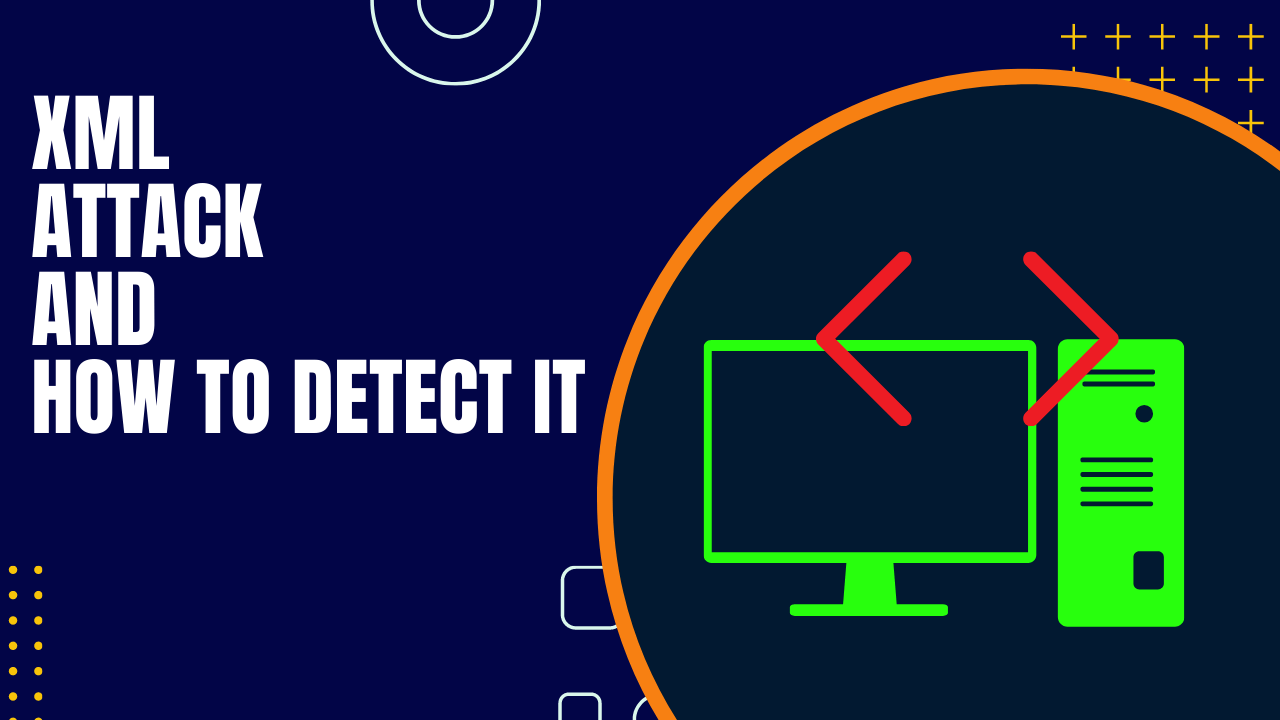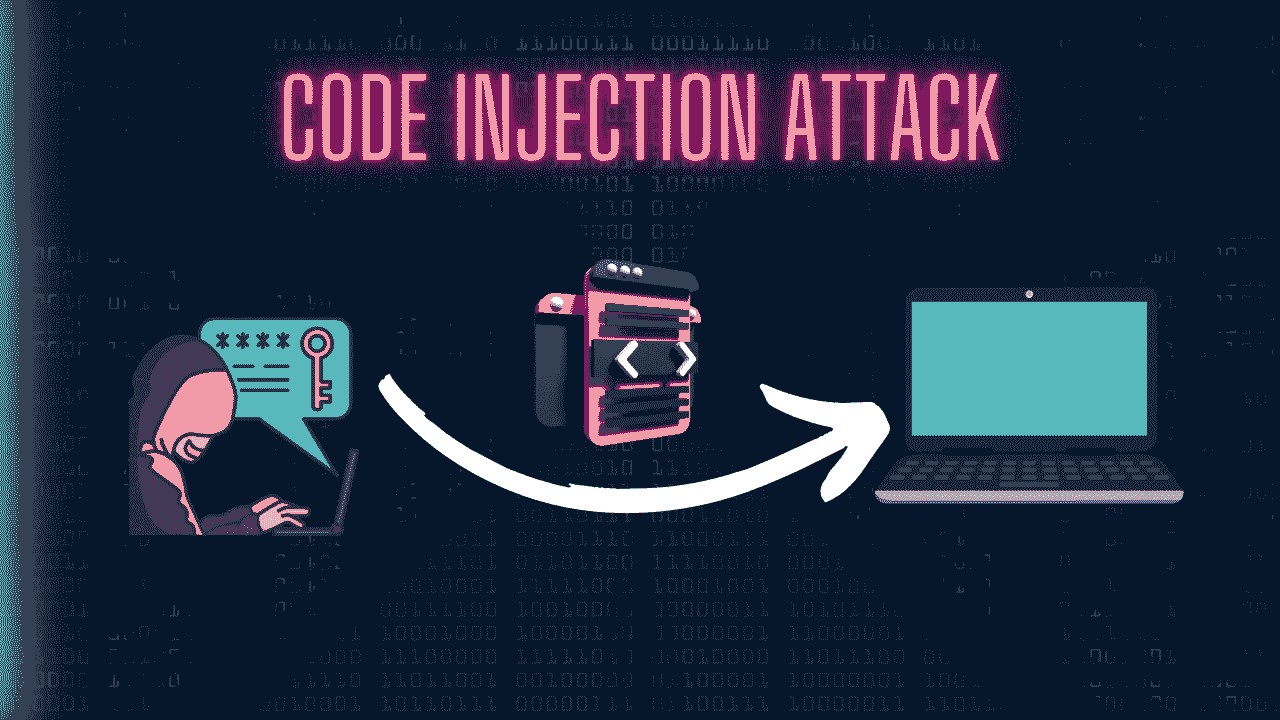In this blog, we will learn about the XML Attack or XML External Entities. XML Attack is one of the vulnerability which comes under the OWASP 10. So, we will see the how to detect and mitigate from this attack, let’s get started with the blog.
Table of Contents
- Introduction to XML Attack
- Introduction to XML
- Reason for XXE or XML Attack.
- Impact of XML Attack
- Introduction to XML Entities
- Document Type Definition (DTD):
- Document Type Declaration (DOCTYPE):
- XML Custom Entities
- XML External Entities
- Mitigation for XML Attack
- Common Examples of XML Attack
- References
- Blogs related to Cyber Attacks
- Posts related to Linux
Introduction to XML Attack
XML Attack (Extensible Markup Language) or XXE (XML External Entity) is a security vulnerability that exploits the parsing of XML input by an application. Attackers inject malicious XML entities to manipulate the processing of XML data, potentially leading to information disclosure, server-side request forgery (SSRF), or remote code execution.
By enticing the application to parse crafted XML input, attackers can exploit vulnerable systems, extract sensitive data, or launch further attacks.
Introduction to XML
XML is a widely used language for structuring and organizing data in a hierarchical format. It is commonly used to represent and exchange information between different systems, applications, and platforms.
XML is a widely used markup language for structuring and exchanging data between different applications and platforms.
Reason for XXE or XML Attack.
However, like many other technologies, XML is susceptible to various security vulnerabilities, including attacks that exploit weaknesses in the way XML is processed and parsed. These attacks are commonly referred to as XML attacks.
However, if not properly secured, XML can be vulnerable to various types of attacks that can compromise the confidentiality, integrity, and availability of data and systems.
Impact of XML Attack
XML attacks can have significant and far-reaching impacts on both the targeted systems and the organizations that own or operate those systems. The consequences of an XML attack can vary depending on the type of attack, the vulnerabilities exploited, and the sensitivity of the data or services involved. Here are some potential impacts of XML attacks:
A) Data Exposure and Breaches:
One of the most immediate and concerning impacts of XML attacks is the potential exposure of sensitive data. Attackers may gain unauthorized access to databases, files, or other resources, leading to the theft of sensitive information such as user credentials, personal data, financial records, or proprietary business data.
B) Unauthorized Access:
XML attacks can result in unauthorized access to restricted areas of a system or application. This unauthorized access can be used for further exploitation, data manipulation, or launching additional attacks.
C) Data Manipulation and Integrity Compromise:
Attackers might modify or manipulate XML data, leading to changes in the behavior of applications or systems. This can result in incorrect processing of data, altered functionality, or even financial losses if manipulated data affects critical transactions.
D) Denial of Service (DoS):
XML attacks, such as XML Denial of Service (XDoS) or Billion Laughs attacks, can overwhelm XML parsers and other system resources, causing applications to become unresponsive or unavailable. This can disrupt business operations, lead to service downtime, and impact user experience.
E) System Disruption and Unavailability:
Exploitation of XML vulnerabilities can cause system crashes, freezing, or slowdowns, affecting the availability and reliability of the entire system.
F) Reputation Damage:
Successful XML attacks can erode customer trust and damage the reputation of the organization. A data breach or service disruption resulting from an XML attack can lead to negative publicity, loss of customers, and long-term damage to the organization’s brand.
Introduction to XML Entities
XML entities are used to represent special characters or data in XML documents. There are two main types of entities: predefined entities and user-defined entities.
- Predefined Entities:
<represents<>represents>&represents&"represents"'represents'
- User-Defined Entities:
- Users can define their own entities using the Document Type Definition (DTD) in XML. These entities serve as placeholders for data that can be referenced within the document.
<!DOCTYPE example [
<!ENTITY name "John">
]>
<root>
<person>&name;</person>
</root>
Here, &name; is a user-defined entity replaced by its value (“John”) during XML processing.
Document Type Definition (DTD):
DTD is a set of rules that defines the structure and the legal elements and attributes of an XML document. It defines the document’s structure, the legal elements and attributes of the XML document, and the relationship between them.
Document Type Declaration (DOCTYPE):
DOCTYPE is a statement in an XML document that declares the document’s DTD or schema. It’s used to define the structure and the legal elements and attributes of the XML document.
XML Custom Entities
XML custom entities are user-defined entities created within the Document Type Definition (DTD) of an XML document.
Entities serve as placeholders for data that can be referenced and reused throughout the document, providing a way to define and manage reusable pieces of content. Custom entities are declared within the DOCTYPE declaration and are typically used to represent strings, characters, or even larger blocks of text.
<!DOCTYPE example [
<!ENTITY greeting "Hello, ">
]>
<root>
<message>&greeting;World!</message>
</root>
In this example, the custom entity greeting is declared with the value “Hello, “. The XML document then uses this entity within the <message> element, resulting in the output: <message>Hello, World!</message>. Custom entities are useful for maintaining consistency and reusability in XML documents.
XML External Entities
XML External Entities (XXE) are references to external resources that can be included in an XML document. They are defined in the Document Type Definition (DTD) or the newer XML Schema Definition (XSD). External entities can be used to include content from external sources into an XML document, making it more modular and potentially reusing data definitions.
<!DOCTYPE example [
<!ENTITY externalEntity SYSTEM "http://malicious-site.com/malicious-file">
]>
<root>
<data>&externalEntity;</data>
</root>
In this case, the external entity externalEntity is defined to fetch content from a remote site. XXE attacks can be mitigated by disabling external entity processing or using secure XML parsing libraries that handle entities carefully.
Proper input validation and thorough security measures are crucial to prevent XXE vulnerabilities.
Mitigation for XML Attack
Mitigating XML attacks requires a comprehensive approach that involves implementing security best practices throughout the software development lifecycle and ensuring proper configuration of systems that handle XML data. Here are several mitigation strategies to help protect against XML attacks:
A) Input Validation and Sanitization:
- Validate and sanitize all user inputs before incorporating them into XML documents to prevent injection attacks.
- Use input validation techniques to ensure that user-supplied data adheres to expected formats and constraints.
- Employ output encoding to neutralize any user input that might be interpreted as XML elements.
B) Disable External Entity Processing:
- Configure XML parsers to disable external entity processing unless explicitly required.
- Avoid loading external DTDs or schemas that could be manipulated by attackers.
C) Use Secure XML Processing Libraries:
- Choose well-maintained and secure XML parsing libraries that offer protection against common XML vulnerabilities.
- Keep libraries and frameworks up to date to benefit from security patches and improvements.
D) Minimize XML Parsing Complexity:
- Limit the depth and complexity of XML parsing to reduce the risk of entity expansion attacks.
- Set parsing limits to prevent the processing of excessively large XML documents.
E) Implement Access Controls:
- Apply appropriate access controls to restrict who can access and interact with XML documents.
- Employ role-based access control to ensure that only authorized users can modify or access sensitive XML data.
F) Content Security Policies (CSP):
Implement Content Security Policies to restrict the sources from which XML content can be loaded or executed.
G) Use Whitelisting:
Utilize whitelisting techniques to explicitly define which XML elements, attributes, or content are allowed in input data.
By applying these mitigation strategies and maintaining a proactive approach to XML security, organizations can significantly reduce the risk of XML attacks and protect their systems, data, and users from potential harm.
Common Examples of XML Attack
A) XML Injection Attack: Attackers insert malicious data or code into XML inputs, taking advantage of poor validation or sanitization. This can lead to unintended behaviors, unauthorized access, or execution of arbitrary code.
B) XPath Injection Attack: Similar to SQL injection, attackers manipulate XPath queries within XML documents to gain unauthorized access or extract sensitive information from a database.
C) XML Denial of Service (XDoS): Maliciously crafted XML documents can exploit vulnerabilities in XML parsers, consuming excessive resources and causing the targeted system to become slow or unresponsive.
Example: Billion Laugh Attack.
D) Entity Expansion Attack: Attackers use nested entity references in XML documents to overwhelm the parser, leading to resource exhaustion and potential denial of service.
F) DTD (Document Type Definition) Attacks: Attackers manipulate DTDs to exploit external entities, potentially leading to information disclosure or remote code execution.
G) XXE (XML External Entity) Attack: Attackers exploit weakly configured parsers to process external entities, which can lead to reading local files, internal resource access, and further attacks.
H) SOAP (Simple Object Access Protocol) Attacks: SOAP, being XML-based, can be vulnerable to various attacks like message replay, injection, and unauthorized access.
References
This blog is mostly referenced from XXE Attack from Port Swigger.
What is XML Attack?
XML Attack (Extensible Markup Language) or XXE (XML External Entity) is a security vulnerability that exploits the parsing of XML input by an application. Attackers inject malicious XML entities to manipulate the processing of XML data, potentially leading to information disclosure, server-side request forgery (SSRF), or remote code execution.
What is XML?
XML is a widely used language for structuring and organizing data in a hierarchical format. It is commonly used to represent and exchange information between different systems, applications, and platforms.
What is XML Entity?
XML entities are used to represent special characters or data in XML documents.
What are the Impact of XML Attack?
Here are some potential impacts of XML attacks:
A) Data Exposure and Breaches
B) Unauthorized Access
C) Data Manipulation and Integrity Compromise
D) Denial of Service (DoS)
E) System Disruption and Unavailability
F) Reputation Damage
What are the mitigation for XML Attack?
Here are several mitigation strategies to help protect against XML attacks:
A) Input Validation and Sanitization
B) Disable External Entity Processing
C) Use Secure XML Processing Libraries
D) Minimize XML Parsing Complexity
E) Implement Access Controls
F) Content Security Policies (CSP)
G) Use Whitelisting
Blogs related to Cyber Attacks
- 10 Tips for the User to Prevent from Being Hacked by Hackers
- Cookie Hijacking, How to Detect and Prevent It with Practicals
- Session Hijacking, and How to Detect and Prevent It with Practicals
- Social Engineering and its Different Types in CyberSecurity
- What is Privilege Escalation Attack, its Types, and Prevention
- KeyLogger Attack and How to Detect and Prevent It
- Eavesdropping Attack and How to Prevent it in Ethical Hacking
- Drive-By Attack and How to Prevent it in Ethical Hacking
- Steganography Attack and How to Hide and Send Data in Image
- What is SQL Injection, its Type, Prevention, and how to perform it
- Broken Access Control Full Guide OWASP 10 in Ethical Hacking
- Insecure Deserialization in Ethical Hacking OWASP 10
- Host Header Injection | How to Attack the Header of a Request
- Email Header Injection | How to Send an Email to an Unknown Person
- DOS Attack (Denial of Service) and Prevent or mitigate with it
- Sensitive Data Exposure Vulnerability OWASP10 in Ethical Hacking
- LDAP Injection and What are the Impact and Mitigation of LDAP
- OS Command Injection Attack, Prevent and Detect with Examples
- Code Injection Attack | How to inject the code into the website
- XPath Injection and What are the Impact and Mitigation of XPath Injection
- CRLF Injection and What are the Impact and Mitigation of CRLF Injection
- Cross Site Scripting or XSS Attack | How to Detect and prevent from XSS Attack
Posts related to Linux
- What is Linux Operating System | Introduction to Linux
- Directory in Linux Define | Linux Directory & its Commands
- Explain the chmod command in Linux | Linux chmod command
- Linux User Management || User Management in Linux
- Linux Computer Network Advanced Command | Network Command
- Redirection in Linux I/O| Linux I/O Redirection
- CronTab and Job Scheduling in Linux | Make CronTab Project
- Linux Firewall Unlock Rules with Firewall-cmd Tutorial
- netstat command in Linux | Linux netstat command
- SSH Command Full Guide with Practical | Linux SSH Service
- awk command Guide | How to arrange the output of the file in Linux
- sed command Full Guide Tutorial | Linux sed Command
- Iptables commands Full Guide: How to make our own Firewall




